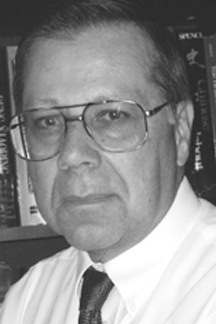GUEST COLUMN, John Richard Schrock, Education Frontlines
Over a hundred small rural Kansas schools are too small to provide qualified in-person teachers in all secondary fields (math, science, ELA, social studies, etc.). They are providing their students with a 1930s-level education.
The Kansas Directory to Public Schools is maintained and updated by the KSDE. In the latest edition, there are two Kansas USD’s with no students K–12! Most Kansas schools graduate high school seniors but some transfer their high school students to another district and five USDs lack a high school.
Admitted to statehood in 1861, Kansas already had over 200 school districts. Each elementary school was its own district with a five member local board of education. By the end of the 1800s, there were over 9,000 school districts and at that time, a grade school education was the goal for most families. A few went on to high school, but it could be some distance away. When more high schools were built, each had their own school board causing overlapping boards and districts.
The first Kansas school consolidation was in 1901 and the state would now fund transportation. Districts could vote to unify. County superintendents had the authority to combine adjoining districts if they had less than five students.
In the late 1950s, Kansas had about 2800 school districts, many were one or two-room schools. Only 238 districts offered the full 1-12 grades. Back then, the state funded 22 percent of district budgets, local taxes provided 74 percent, and federal money was three percent. Most other states had consolidated and eliminated one- and two-room schools.
In 1963, a statewide vote approved 311 unified schools districts (“USDs”). Our 10-member elected Kansas State Board of Education (KSBE) was created and they in turn hired the Commissioner.
Rural Kansas continues to depopulate. By 1991, there were 303 USD’s. Two decades ago it dropped to the present 286. In 2002, a study from Augenblick and Myers showed Kansas had 1 percent of the nation’s pupils, 1.6 percent of the nation’s schools and 2.1 percent of the nation’s school districts. Kansas was less than half as consolidated as the rest of the country and they recommended dropping the number of districts to either 284 or 255. During this time, two Kansas superintendents proposed using a central hub model to consolidate into 40 regional school districts (RSDs). Most elementary schools would remain at current local locations, but many secondary students would change buses and ride on to their high school with total bus time always less than an hour.
In the late 1980s, I knew many solid biology teachers across Kansas in order to place student teachers. One then informed me that he had moved to a larger school over 150 miles away. But he was still listed at his prior school too. The reason was simple: at that time, if a district went longer than two years offering a class taught by an “uncertified” (today “unlicensed”) teacher in the subject area, the school would lose accreditation. This mis-listing hid the problem, although it could be discovered if KSDE actually inspected the school, which sometimes did occur back then.
During the QPA (1990s) and No Child Left Behind (2001) move to using assessments, Kansas administrators asked for a regulation change since they could supposedly prove effectiveness through test scores. After public hearings, the KSBE dropped the loss-of-accreditation-after-2-years-of-an-unqualified-teacher provision. That requirement could be restored using the same procedures. Combined with on-site inspections, our massive extent of unqualified teachers would rapidly cause consolidation, primarily to the regional district system where students hub to a large high school more likely to have qualified teachers. This elimination of Kansas high schools graduating less than 50 students per year would go far towards providing our K-12 students with more competent teachers. It does not solve the problem of our K-12 schools requiring one-third the science required in European and Asian schools, or science teacher training in the U.S. being on average far less than in the EU or Asia.
Small communities wishing to maintain schools too small to have all-qualified teachers totally ignore the resulting dramatic scientific illiteracy that has grown since the 1970s. Both elected KSBE members and state legislators know that school consolidation is a “third rail” that could result in their election recall. But the choice is simple: begin to rebuild science literacy through school consolidation, or continue the educational decline that has been occurring in all but our most affluent school districts---and drop to third country status.











